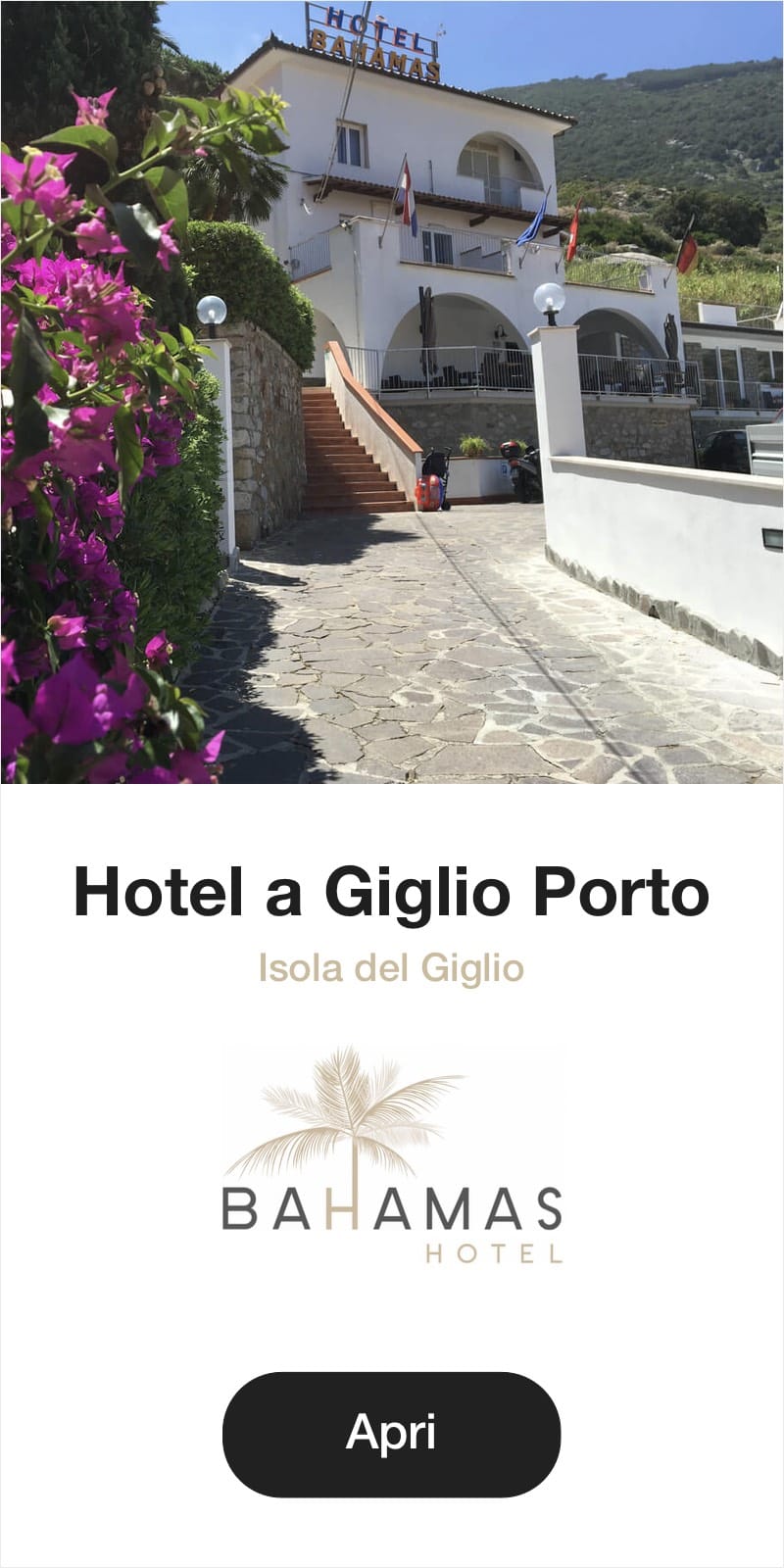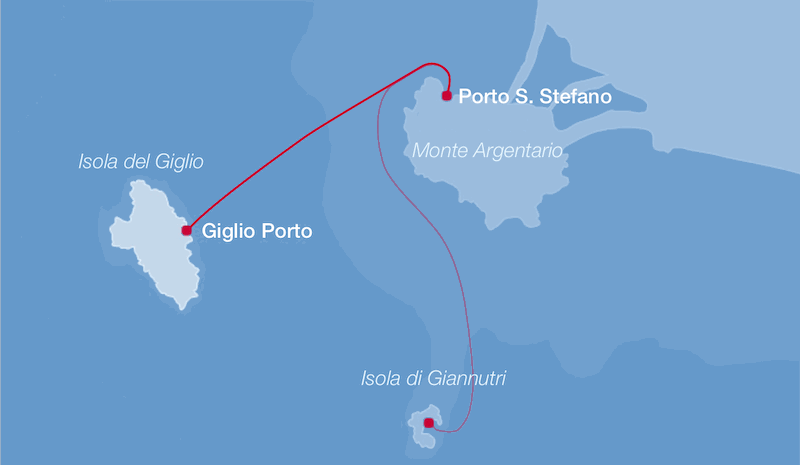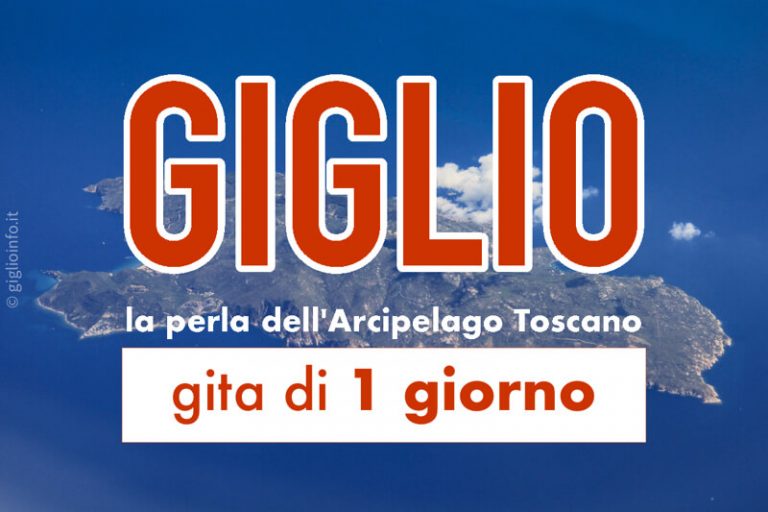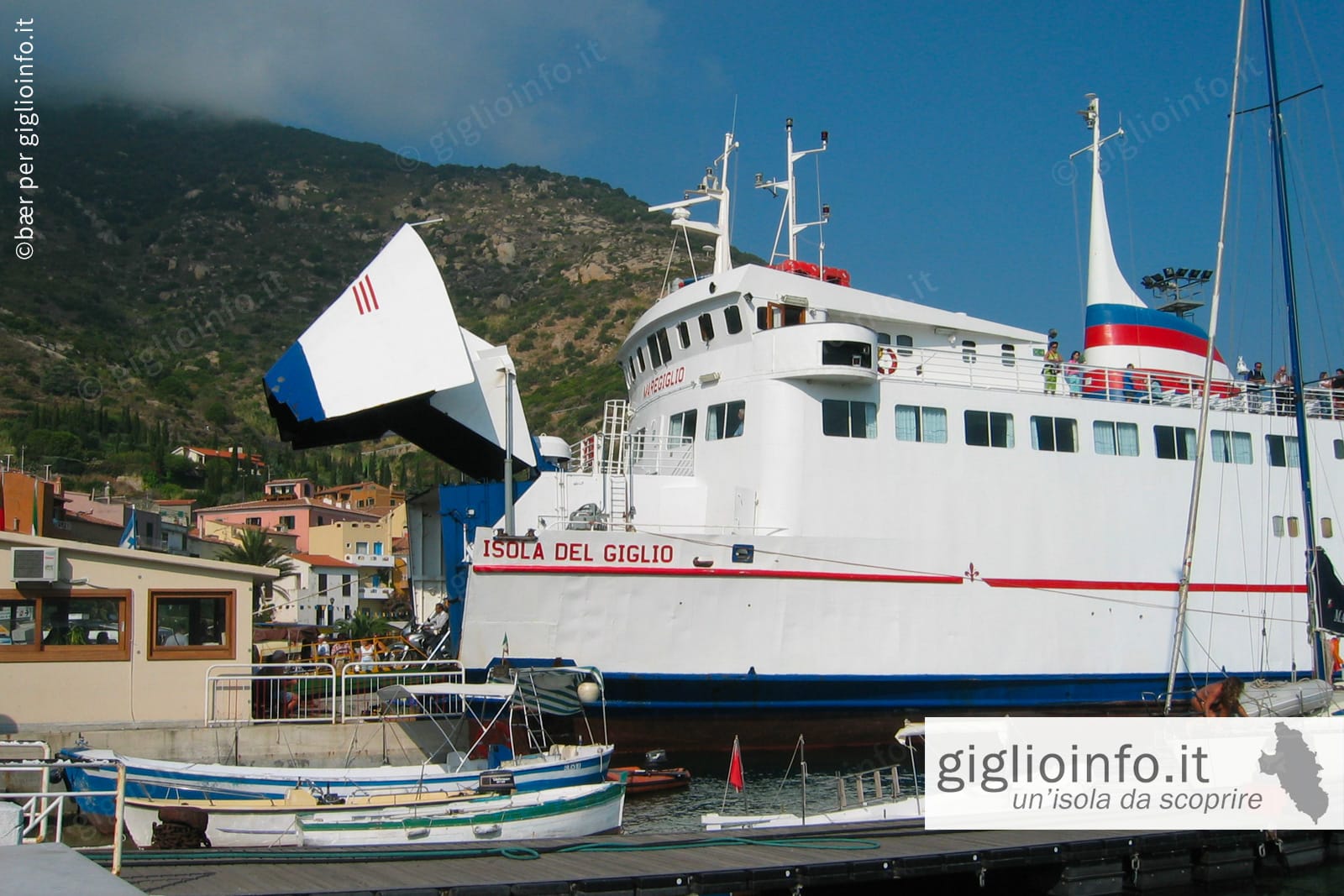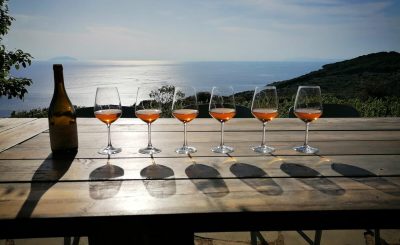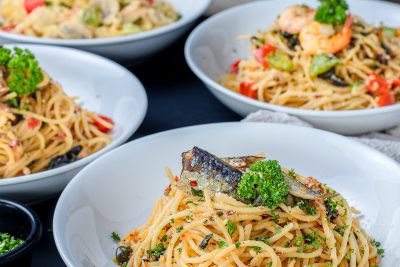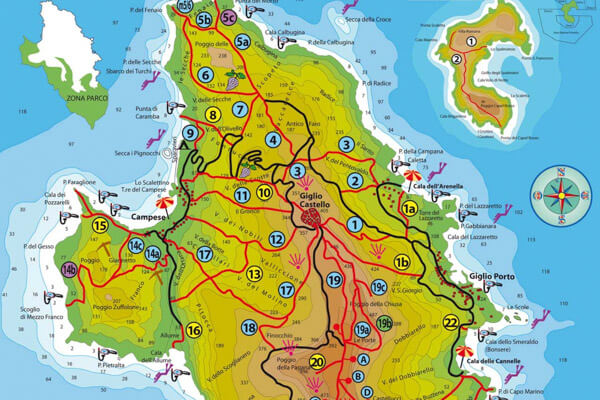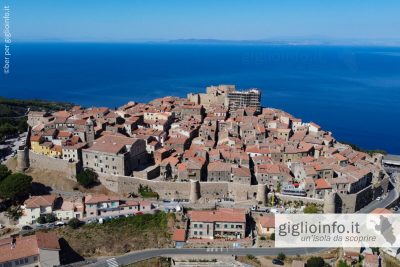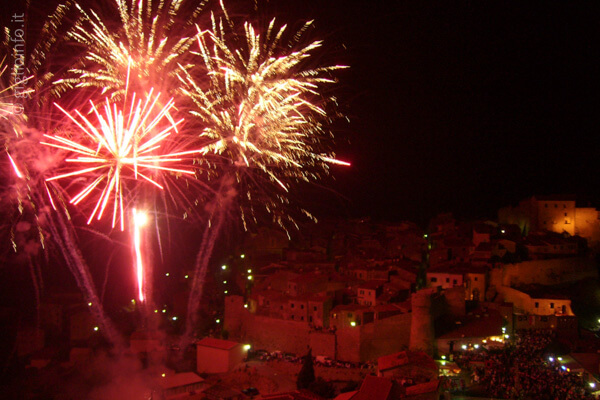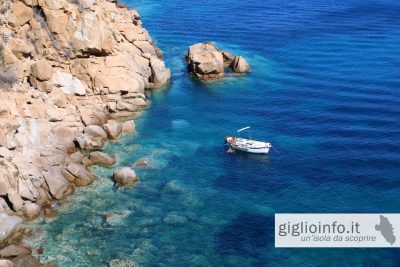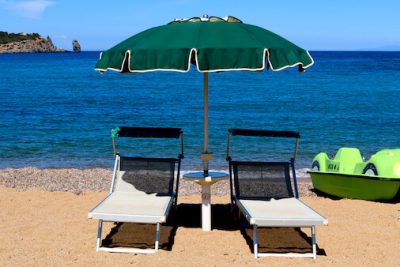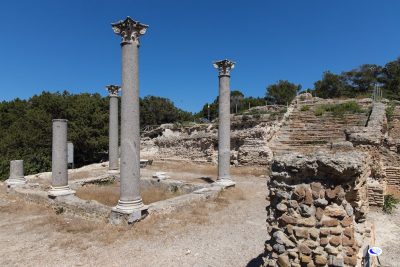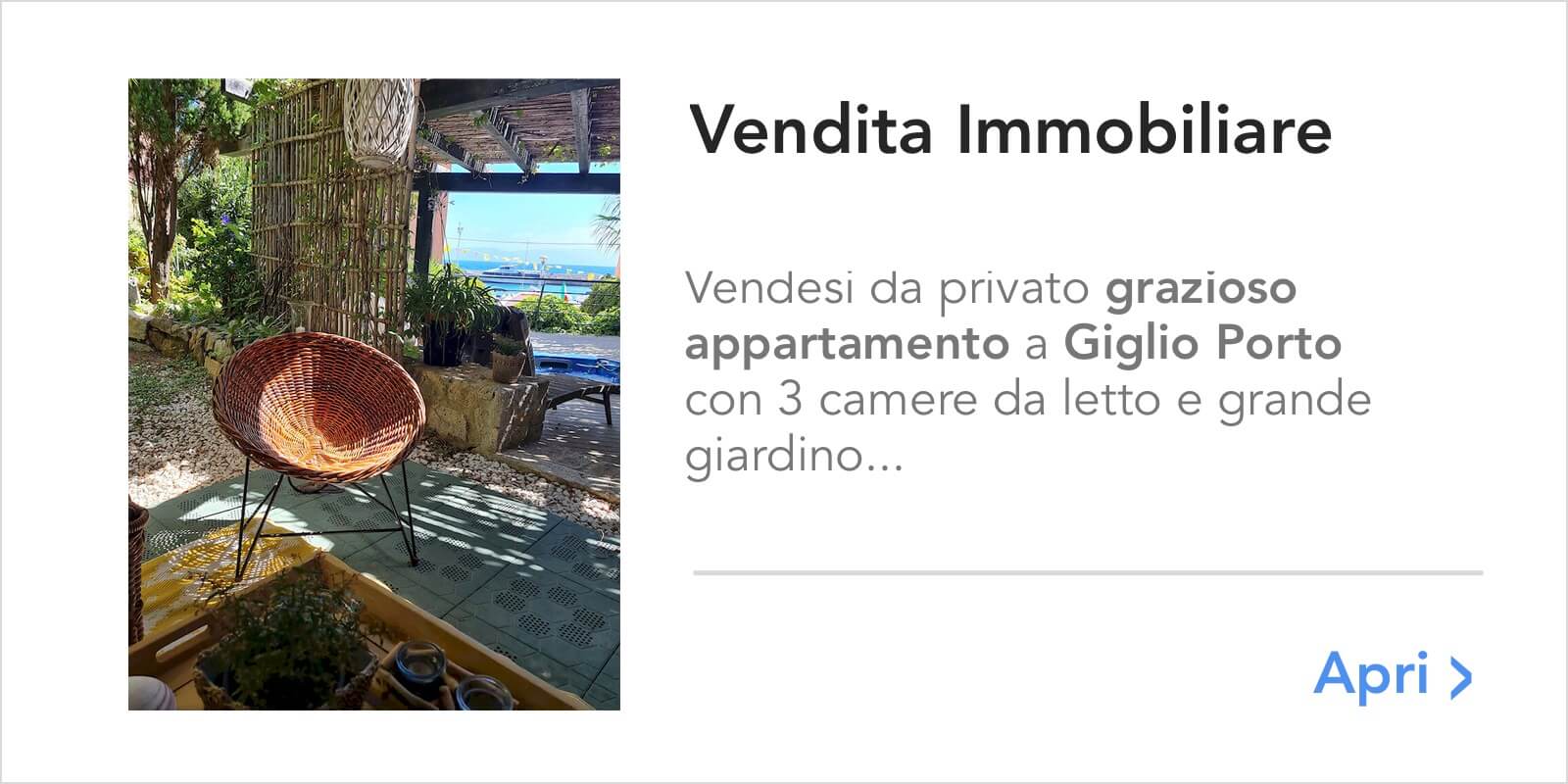Explore Giglio Island, Tuscany
The Little pearl in the tuscan archipelago
The island of Giglio is known above all for its natural beauties: the crystal clear sea, with rich and fishy seabed, are the setting for a 90% untouched nature where the low Mediterranean vegetation still reigns with its colors and perfumes.
Beautiful sandy beaches and isolated coves, ancient paths immersed in a rich nature, breathtaking views, a picturesque port and the charming medieval village of Giglio Castello make of Giglio island a treasure to be discovered.
It is the ideal destination for all those who love a genuine relationship with nature and the rustic country environment, the sea, walks, bird watching, minerals and the fascinating underwater world. The temperate climate allows the visitor to enjoy a wonderful holiday in every season.
The islands are special places, where it is easier to get caught up in the idea of being in a smaller, fascinating world full of surprises. Giglio Island is one of these special places, where even walking along a path makes you feel a different air, scented with the sea and flowers ...
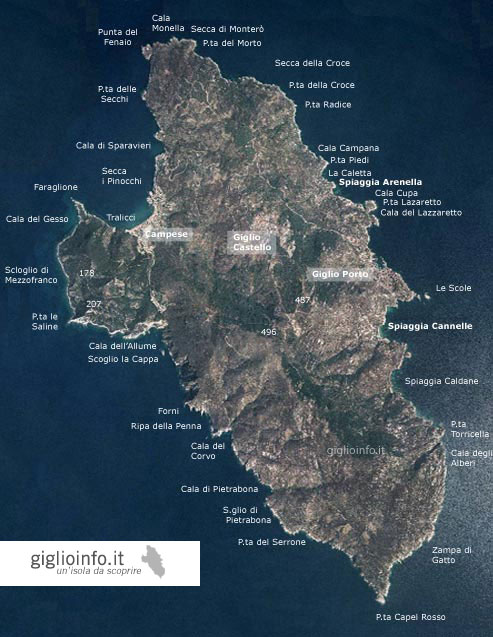
Landscape of Giglio Island
The beautiful island Isola del Giglio is located in the southern corner of the Tuscan Archipelago, a group of islands between Tuscany and Corsica in the Tyrrhenian Sea. It’s only 11 miles from the Argentario promontory, where the ferries leave from. With an area of 21 square kilometres, 8.3 kilometres long and 4.7 kilometres wide, it is the second largest island in the archipelago after Elba and has a population of around 1500.
Almost entirely mountainous, its highest point, Poggio della Pagana, reaches 496 metres above sea level. From the top, especially on a clear day, you can enjoy a spectacular view of the coast and the other islands of the Tuscan archipelago.
The island of Giglio is almost entirely granite, with the exception of the
Franco promontory, which is made up of limestone and Palaeozoic quartzite. At the northern end of the promontory there is a spectacular rock, the Faraglione di Campese.
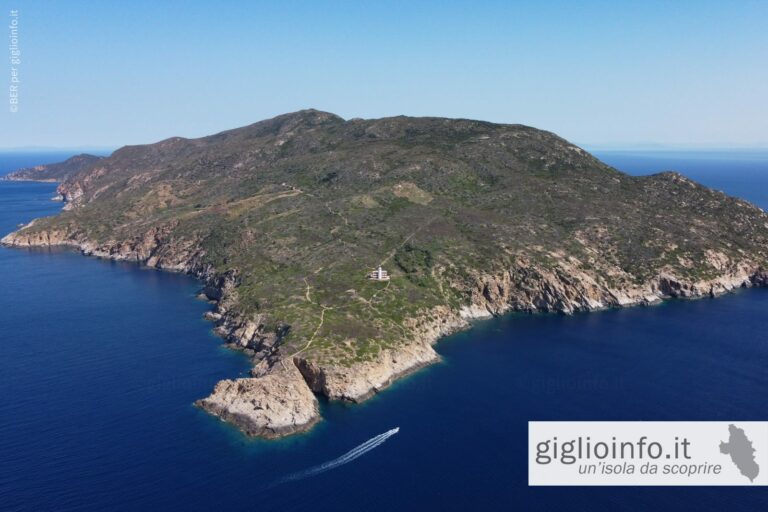
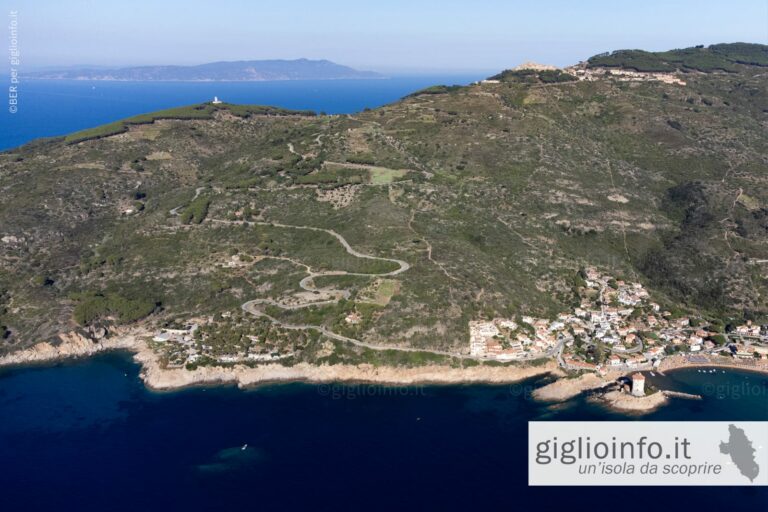
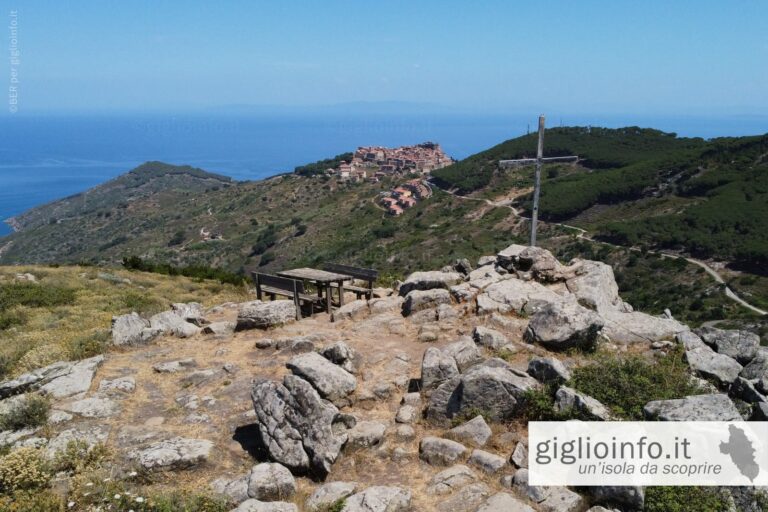
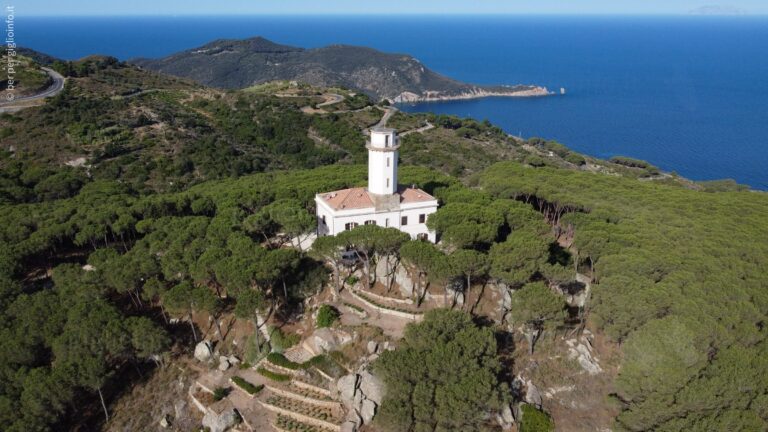
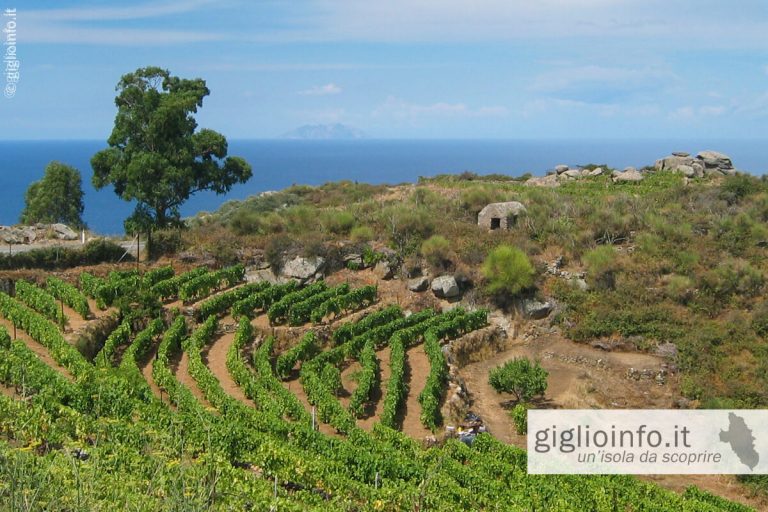
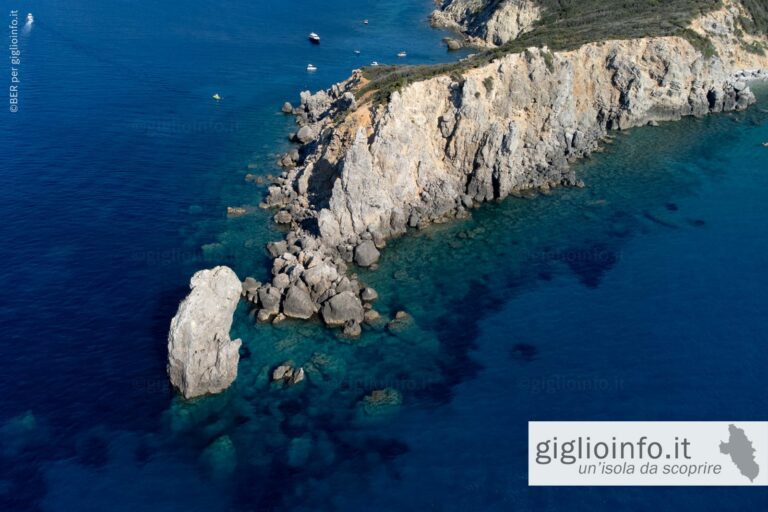
Flora and Fauna
The Isola del Giglio lies uninhabited for 90% of its territory – here flora and fauna of great beauty and interest dominate the wild nature, especially in springtime, when the island explodes in colours, becoming a picture of incredible beauty.
The mild Mediterranean climate, characterized by a high level of summer dryness accompanied by the frequent sea breeze, favours evergreen plants such as those with coriaceous leaves or thorns (like the broom).
While the island was once used primarily for agriculture (pasture land in the upper part and terraces for growing wine, olives, fruit and vegetables in the central part down to the coast), most of it is now covered by typical Mediterranean maquis. Ancient paths, also known as mule tracks, connect the villages and lead to the fields and vineyards where the full-bodied Ansonaco wine is still grown today. On the ridge near Giglio Castello and around the old lighthouse, there are two pine forests that were planted in the middle of the last century. In the shady valleys and on the eastern side of the island, there are smaller oak forests.
The botanical species are rich in abundance – a researcher had registered over 700 – ranging from strawberry trees on heather to chestnut trees.
In addition, there are some rare animals on Giglio, such as the frog “Discoglosso sardo”, the peregrine falcon, and the royal and Corsican seagulls, whereas vipers and other venomous animals are all but missing. There are no mouflons left either. In 2023, the campaign to eradicate invasive species, carried out by the Tuscan Archipelago National Park to protect the natural habitat, ended.
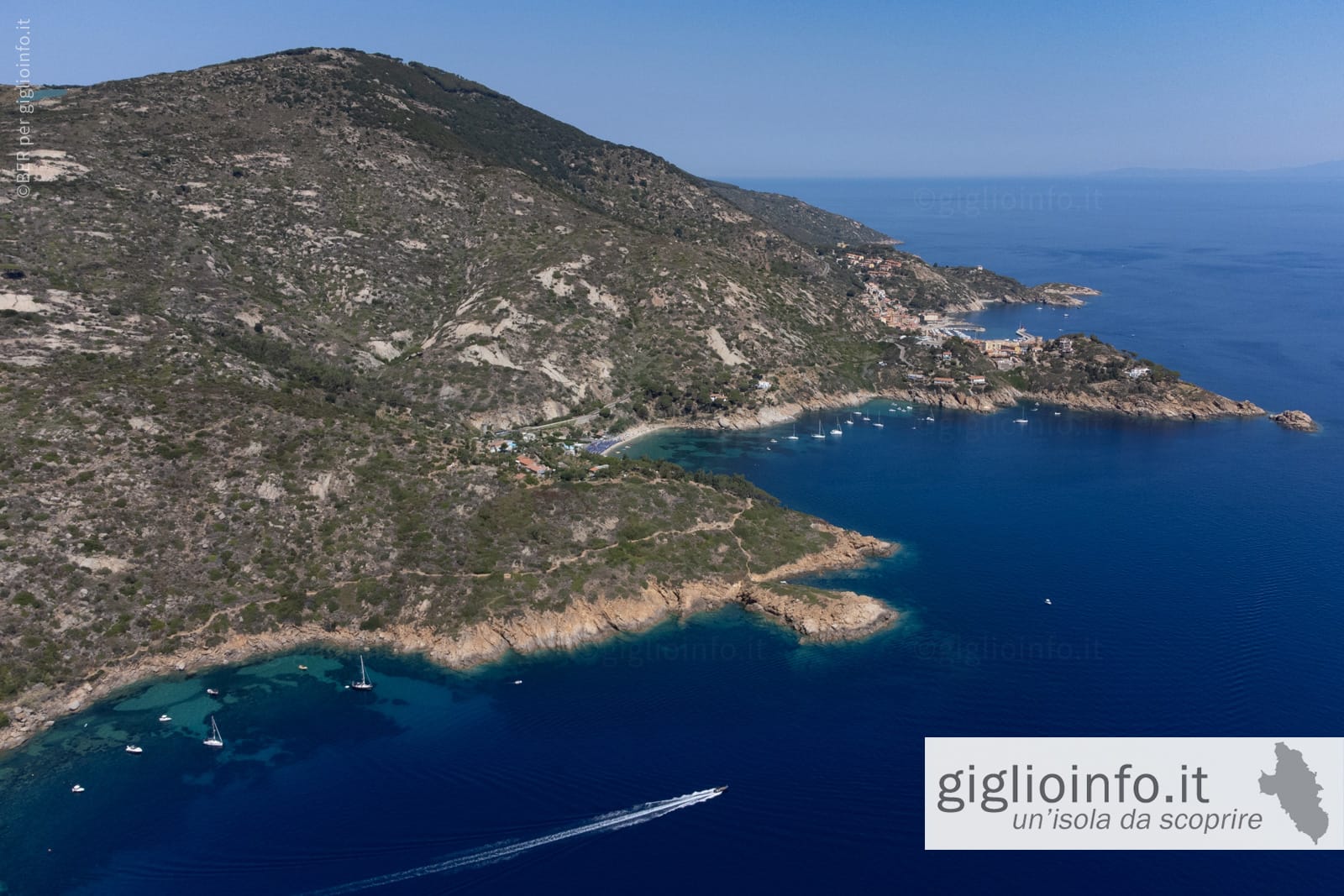
Coast and sea
Giglios Sea, Coast and Beaches
The impressive coastline of the island of Giglio stretches for 28 kilometres, alternating between steep cliffs, gentle granite rocks, coves and beautiful sandy beaches.
The east coast is generally smoother, with numerous small coves that invite you to linger. The smooth granite cliffs are often comfortable to lie on, provide easy access to the sea and offer cliff-diving opportunities for the children.
The west coast, on the other hand, is wilder, with steep cliffs plunging straight into the sea. Only the north-western Promontorio del Franco is made of limestone rather than granite, and despite the rugged coastline, there are many small pebble beaches that are difficult to reach from the mainland. A wonderful way to explore the island is by sea, and a boat trip (2-3 hours) is a must during your holiday in Giglio.
Diving and Snorkeling
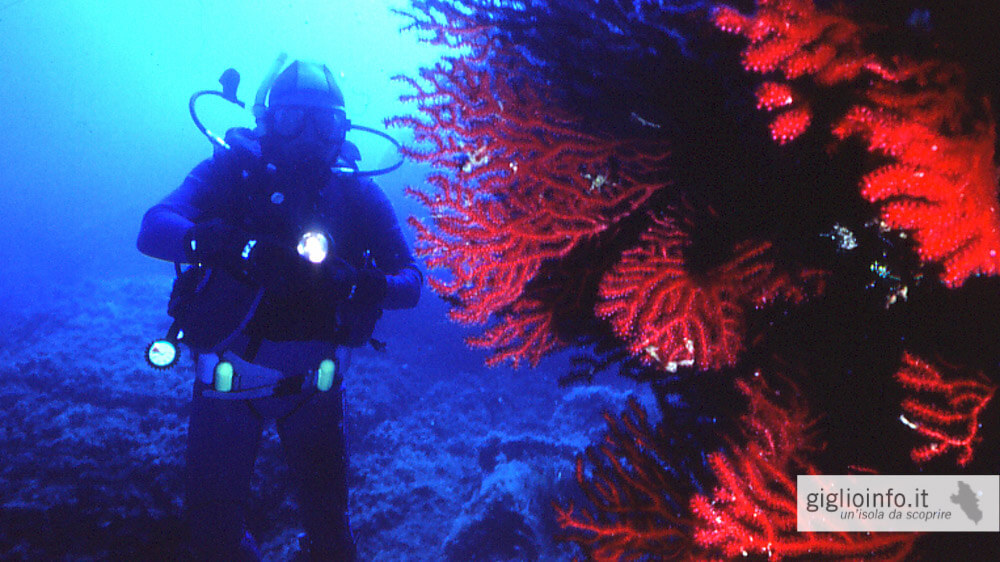
The crystal clear waters and fascinating marine life have made Giglio one of Italy’s most popular diving destinations. Divers have the opportunity to explore numerous dive sites, including colourful coral reefs, fascinating shipwrecks and steep cliffs and caves rich in fish and other marine life. Snorkellers can also enjoy a wonderful underwater world of fish, octopus and starfish among granite rocks and gorgonian meadows.
Beaches
There are four large sandy beaches on the island of Giglio, three of them, Cannelle, Caldane and Arenella, on the eastern coast near the port of Giglio Porto, and one on the north-western coast of the island, Giglio Campese. The beaches are very different from each other, not only in size, and each one has its own unique beauty.
With the exception of the small Caldane beach, which can only be reached on foot or by boat, all the other beaches are easily accessible. All the beaches have a ‘free’ section and at least one lido with sun umbrellas and deckchairs for hire.
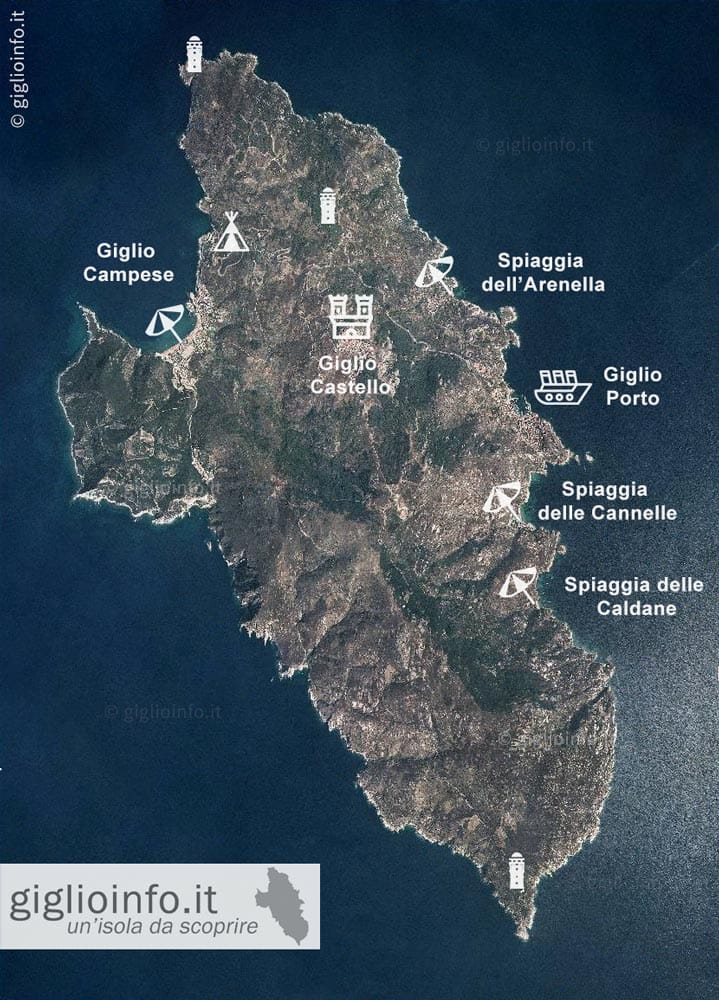
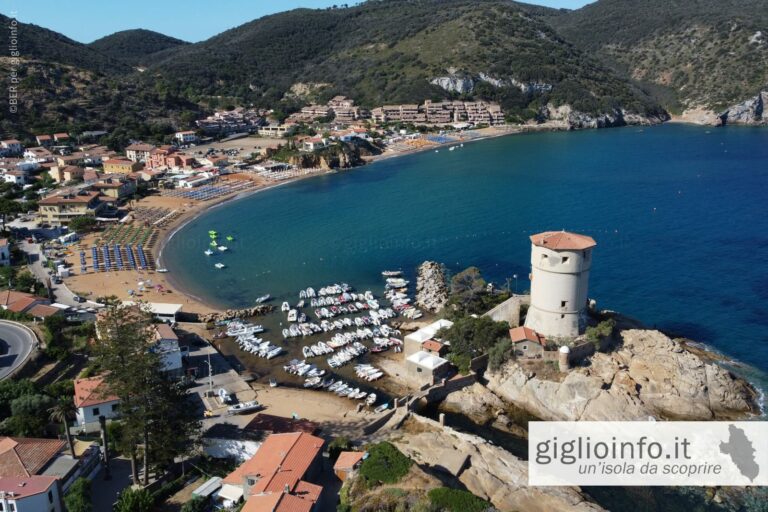
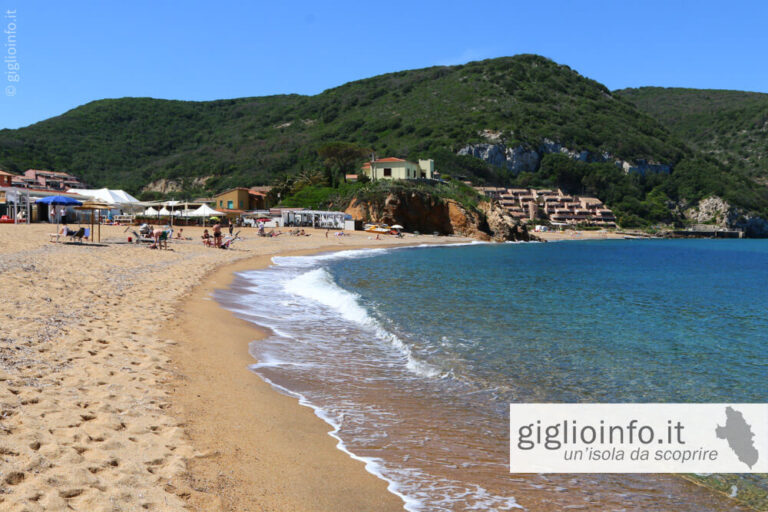
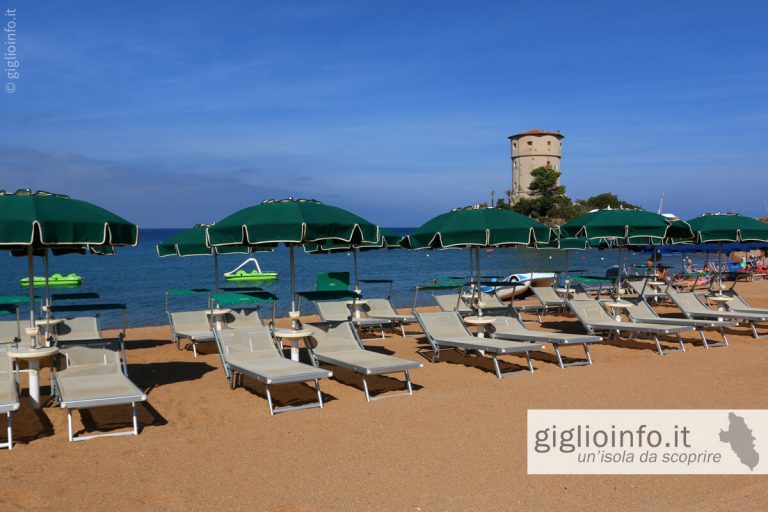
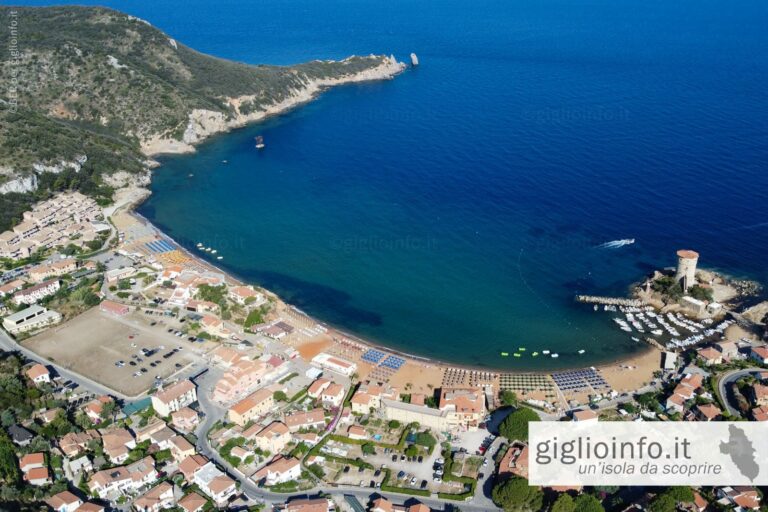
Campese Beach
The largest beach on the island, Campese Beach, is famous for its landmark, the Medici Tower, as well as for its magnificent sunsets…
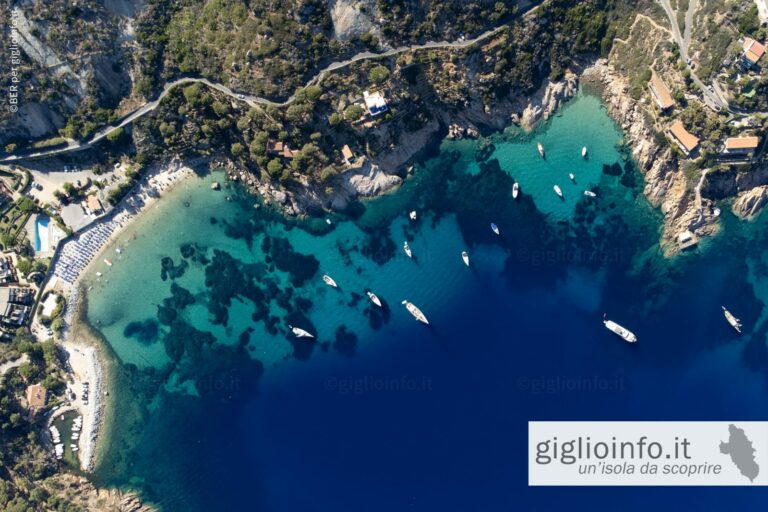
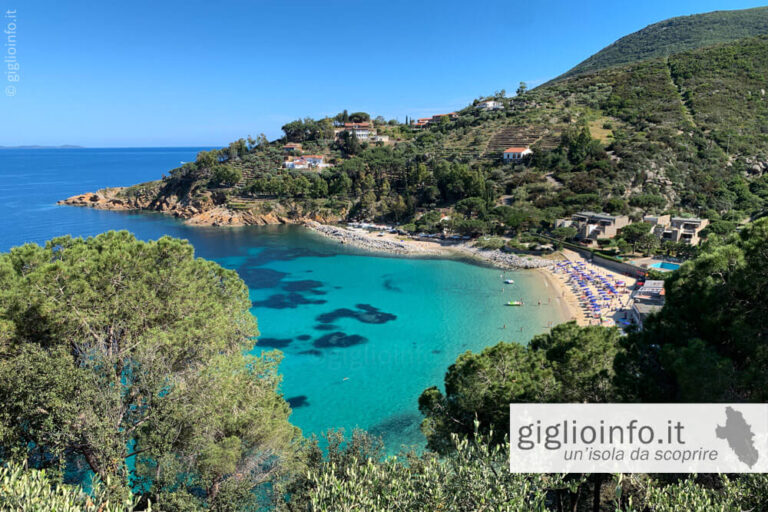
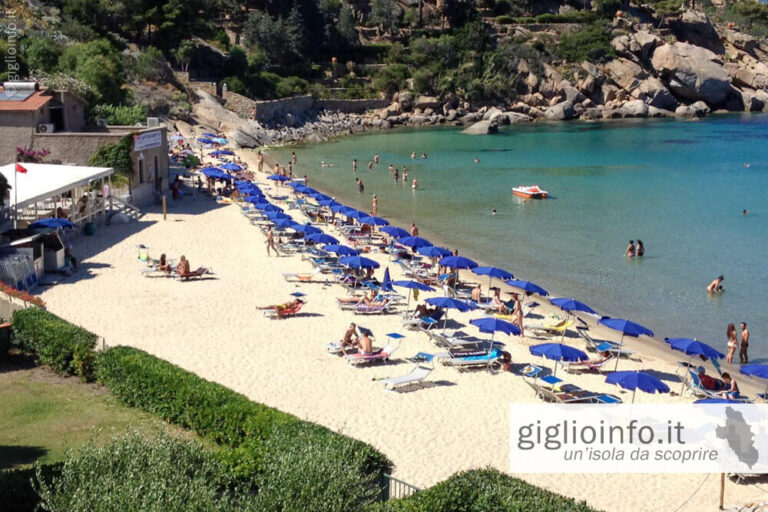
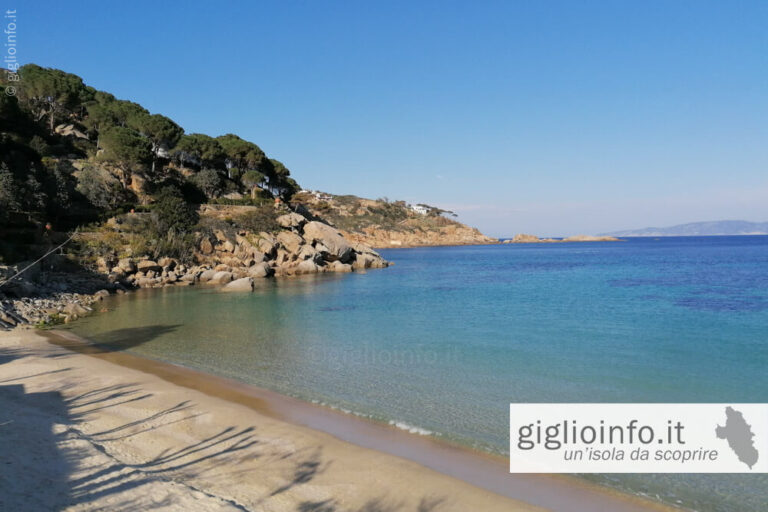
Cannelle Beach
The beach of Cannelle is less than 2 km from the port of Giglio Porto and, with its fine white sand and shallow waters, is particularly popular with…
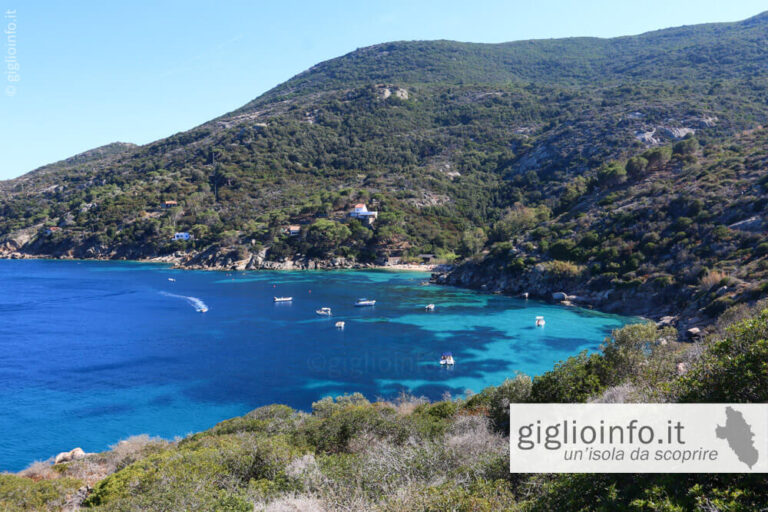
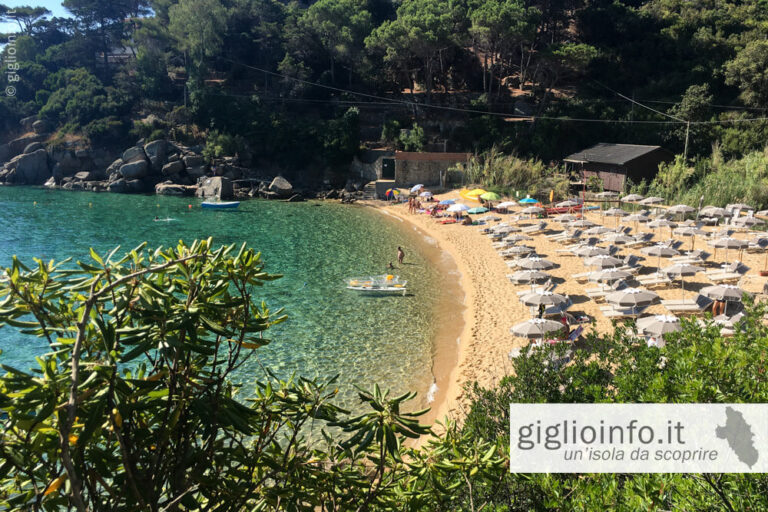
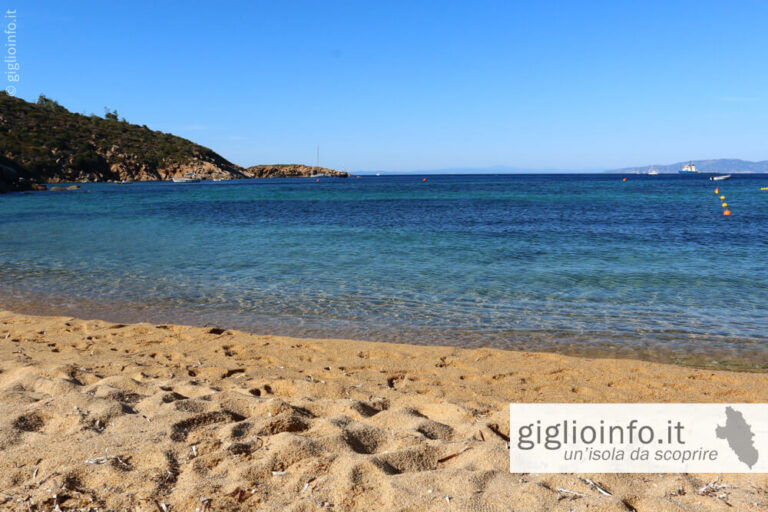
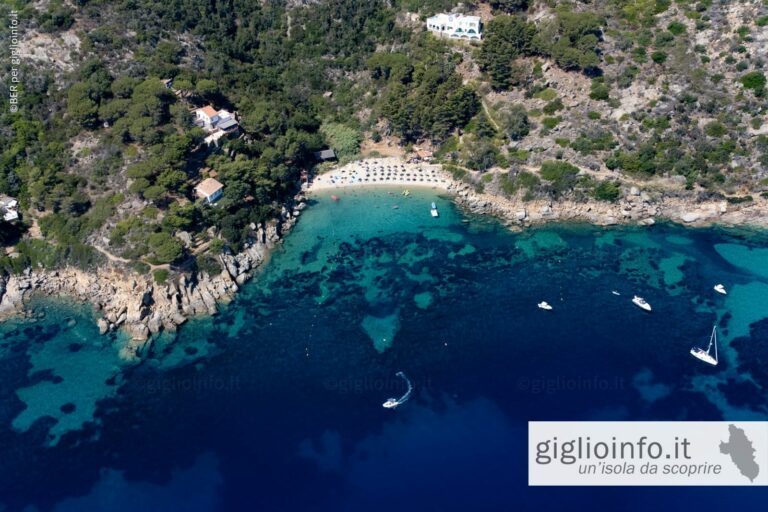
Caldane Beach
Caldane beach is the smallest sandy beach on the island and can only be reached on foot or by boat. It is also known as the ‘wild’ beach of the island.
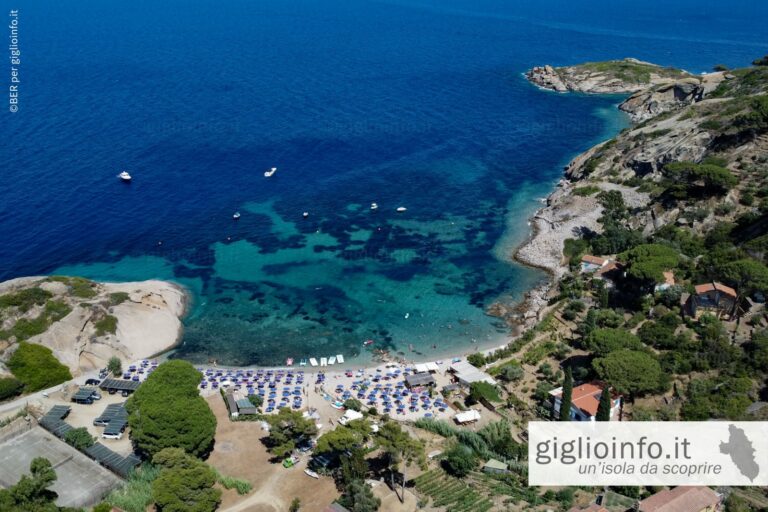
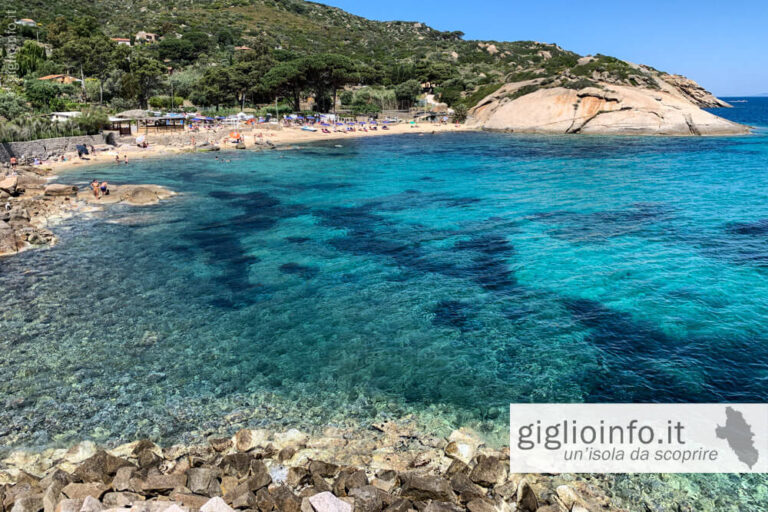
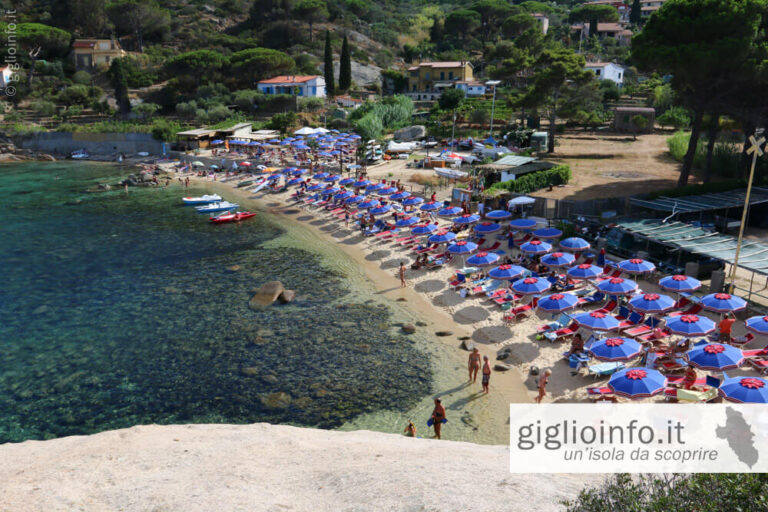
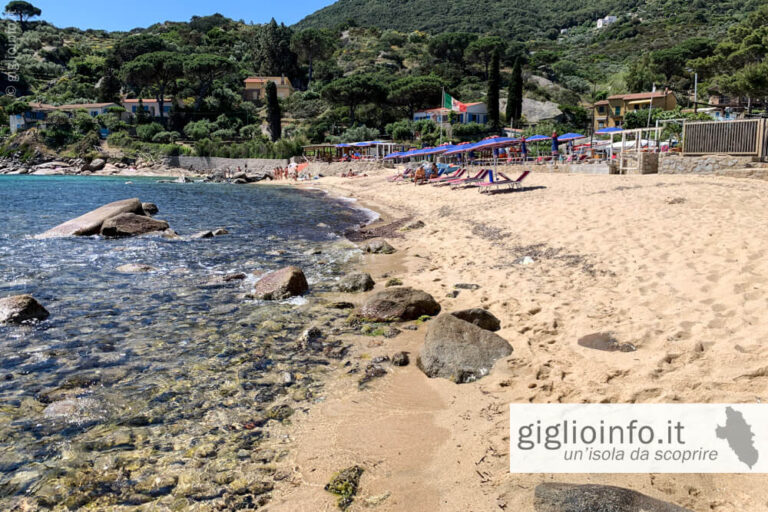
Arenella Beach
Arenella beach is located just north of the port and is the third largest beach on the island. It is ideal for the youngest snorkellers…
Advertisement
Villages of Giglios
There are three towns on Giglio: Giglio Porto, the only port on the island where you can arrive by ferry or cruise ship, the medieval Giglio Castello on the ridge and the seaside resort of Giglio Campese with its large beach on the west coast of the island.
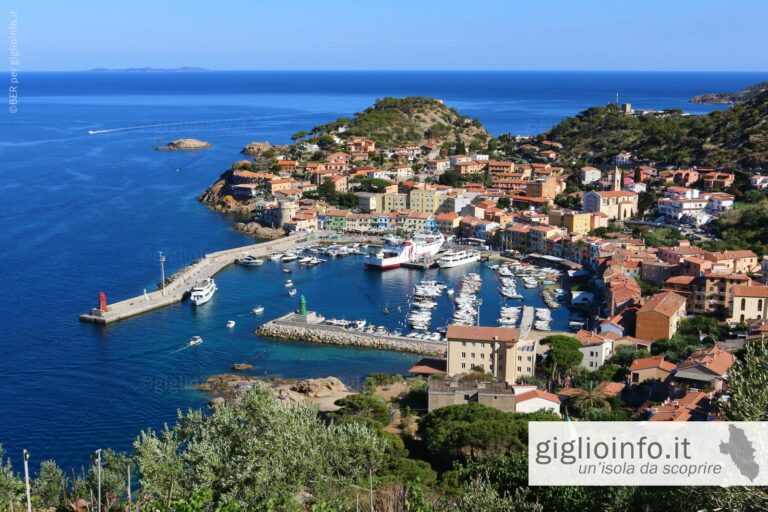
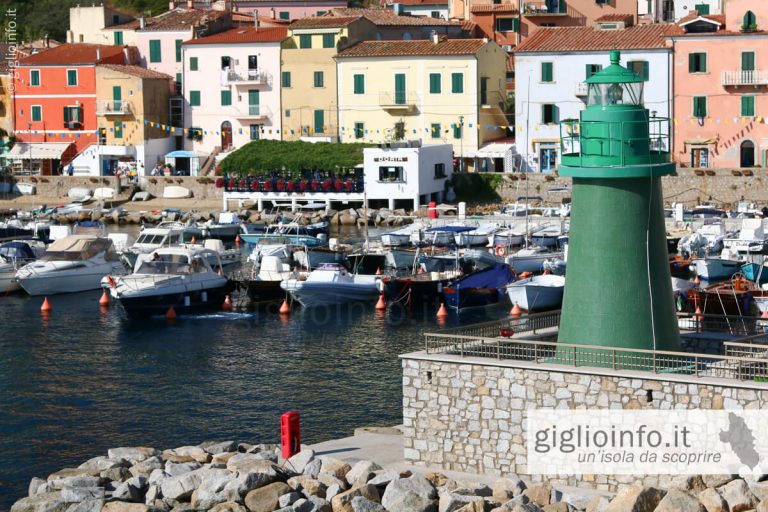
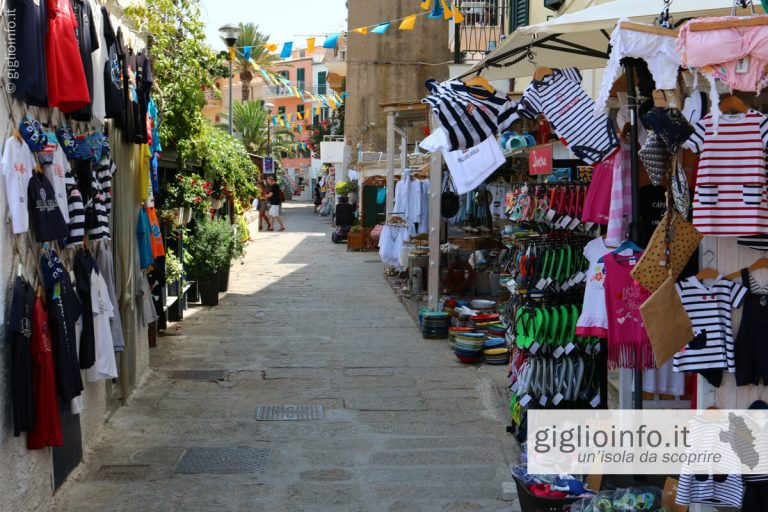
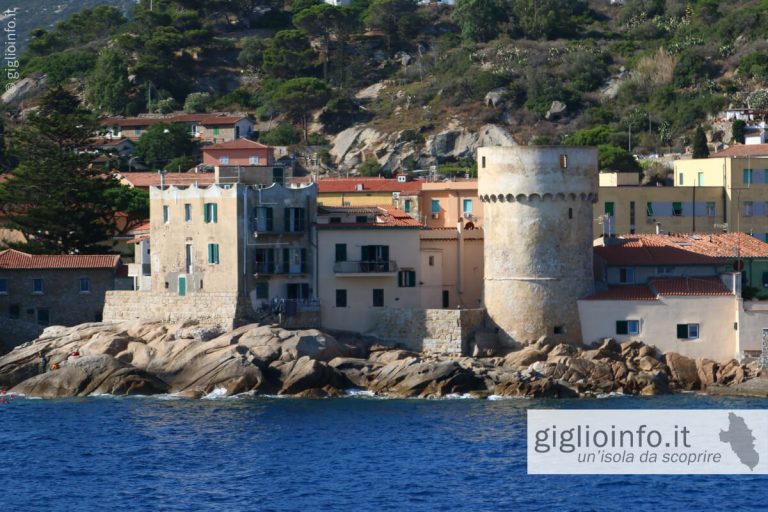
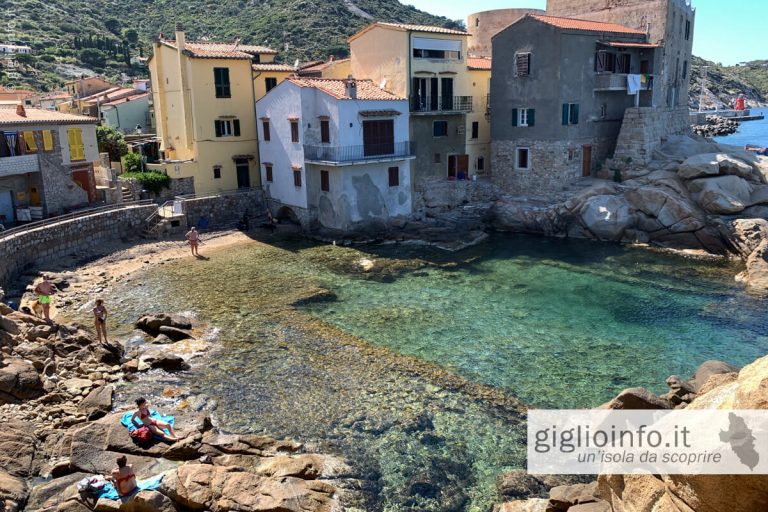
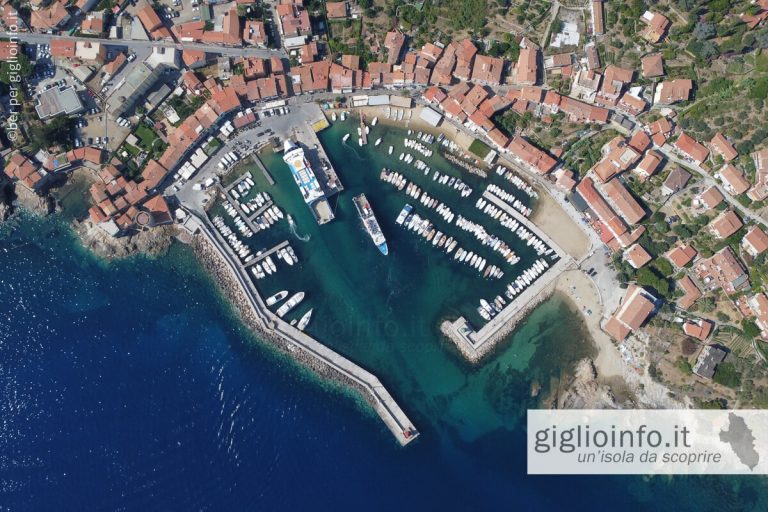
Giglio Porto
Giglio Porto is the only port on the island, and the small, colourful fishermen’s houses are picturesquely arranged in a semicircle around the incredibly clear sea. In the the narrow, lively alleys shops of all kinds alternate with restaurants, bars and ice-cream parlours. Worth seeing: the fortified tower Torre del Saraceno and the remains of a Roman villa.
Giglio Castello
The enchanting village of Giglio Castello lies 405 metres above sea level on the ridge of the Isola del Giglio. Inside the medieval walls, with their narrow streets and small squares, little seems to have changed over the centuries. The church of San Pietro Apostolo, with its many artefacts, is well worth a visit. The town offers a wonderful view of the entire Tuscan archipelago and is also the central starting point for many hiking routes.
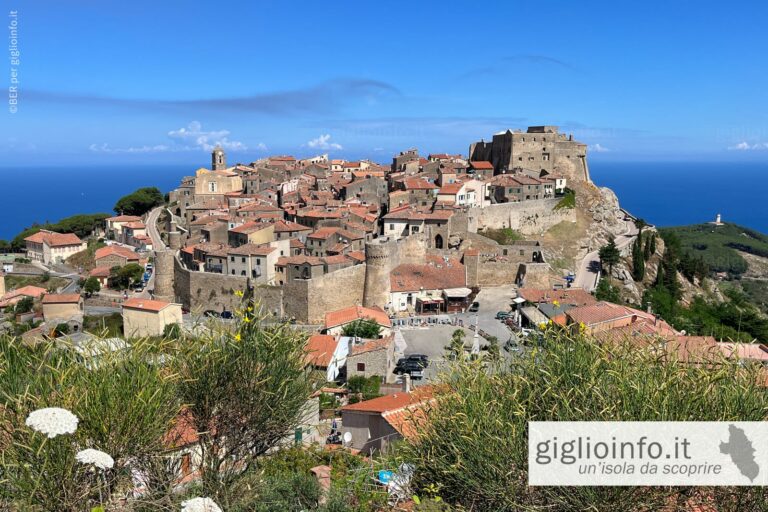
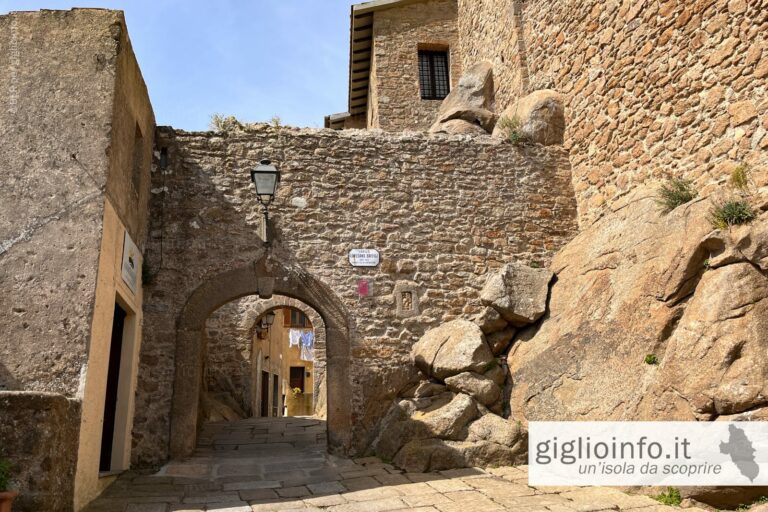
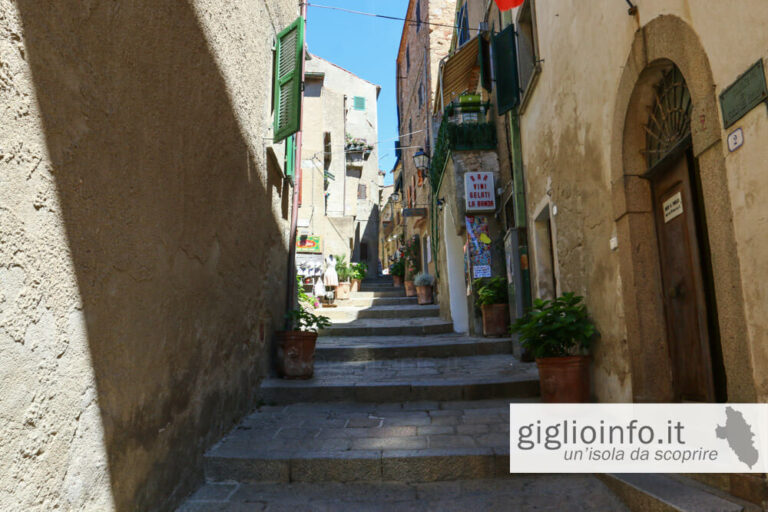
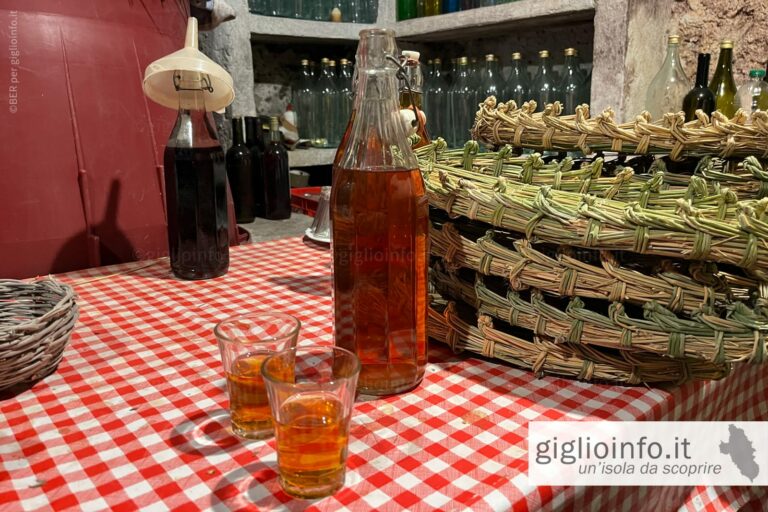
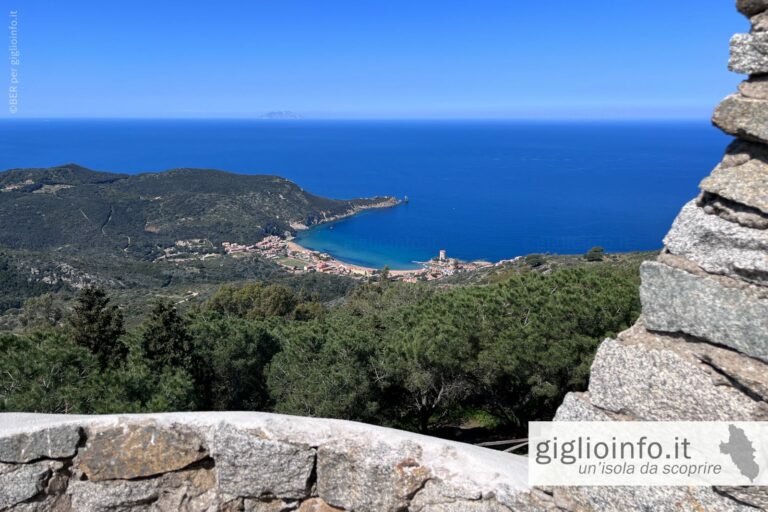
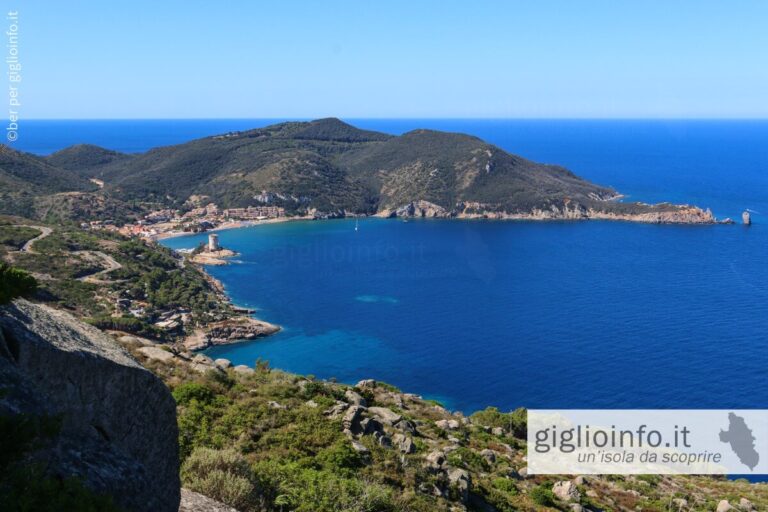
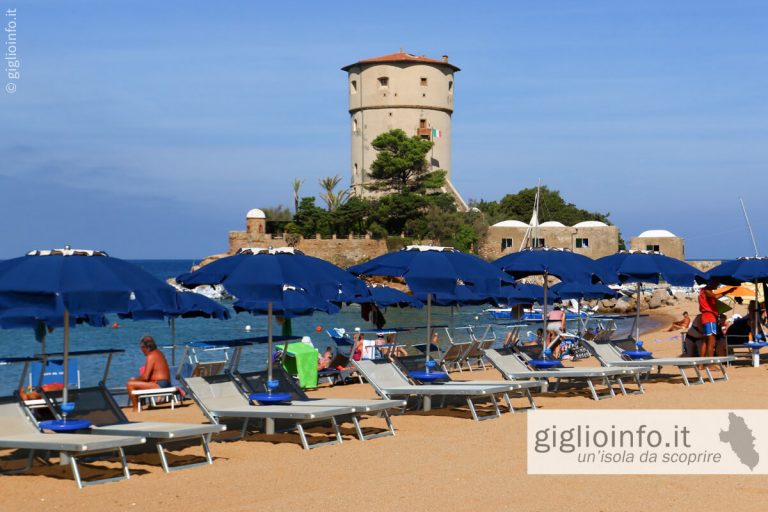
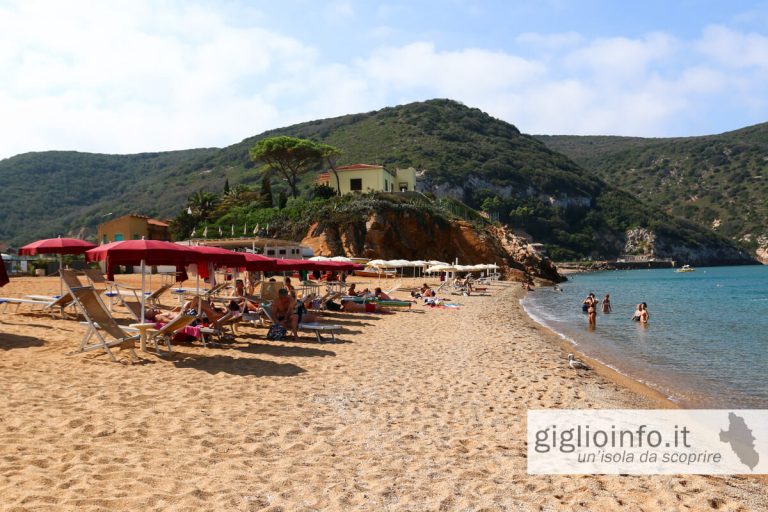
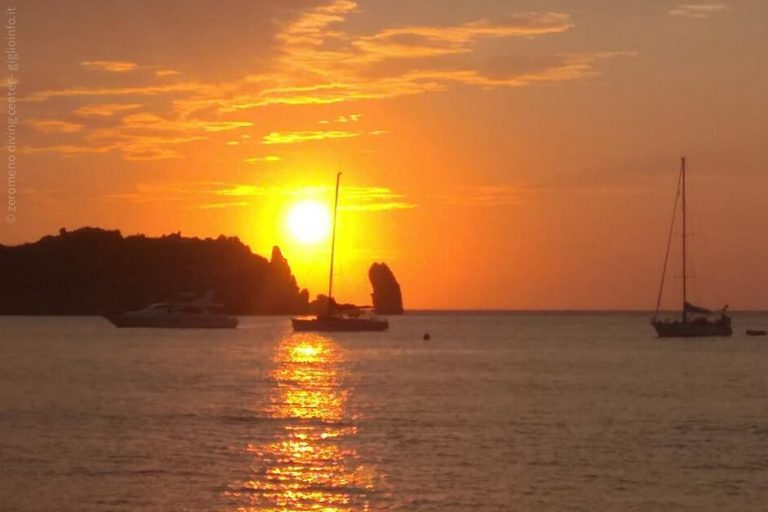
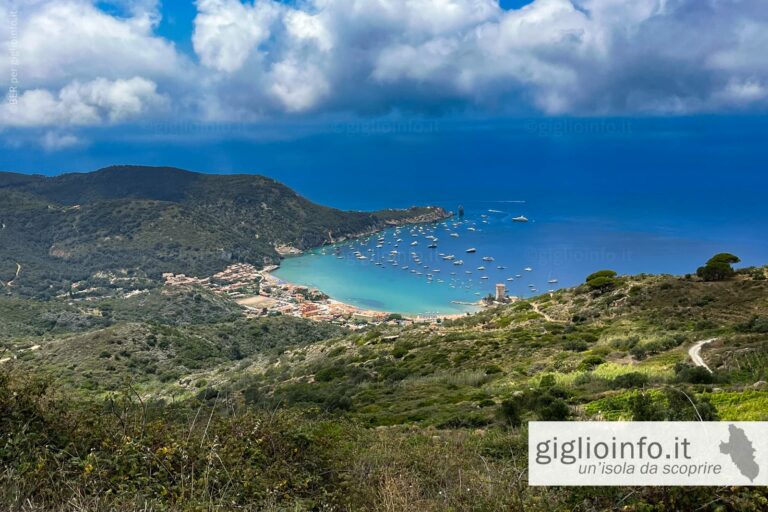
Giglio Campese
Giglio Campese is located on the western side of the island and is a place that has developed with tourism along a long and wide sandy beach. The landmark of this beautiful bay is the medieval Torre del Campese on one side and a monolithic rock, the Faraglione, which rises 20 metres out of the water on the other. Thanks to its north-western orientation, you can enjoy wonderful sunsets from the beach.
History and Culture
The island of Giglio was inhabited in prehistoric times and was settled by the Etruscans and Romans. Remains of a Roman villa can be seen on both Giglio and Giannutri. Across the centuries, the island changed hands frequently: in the Middle Ages it was ruled by Pisa before coming under the influence of Florence’s Medici family in the 15th century.
Over the centuries, the island was threatened by corsairs: in 1544, the pirate Barbarossa raided the island and took almost all of the 1,200 inhabitants as slaves. The island was further fortified and repopulated with farmers, mainly from the Siena region. It was only with the end of the raids in 1799 that calmer years began, and in 1860 the island was incorporated into the Kingdom of Italy.
For centuries, the Gigliesi lived from pastoral farming and the terraced cultivation of wine, olives and fruit. At the beginning of the 20th century, pyrite was also mined in a mine in Campese and granite on the east coast. With the beginning of tourism in the 1960s, the island developed into a popular holiday destination and can now accommodate up to 10,000 people during the summer months.
An interesting fact: the name Giglio does not come from the flower or the Florentine domination, but from the Latinisation of the Greek word Capra or Aegilium: Island of the Goats. Today, however, there is no trace of the goats.
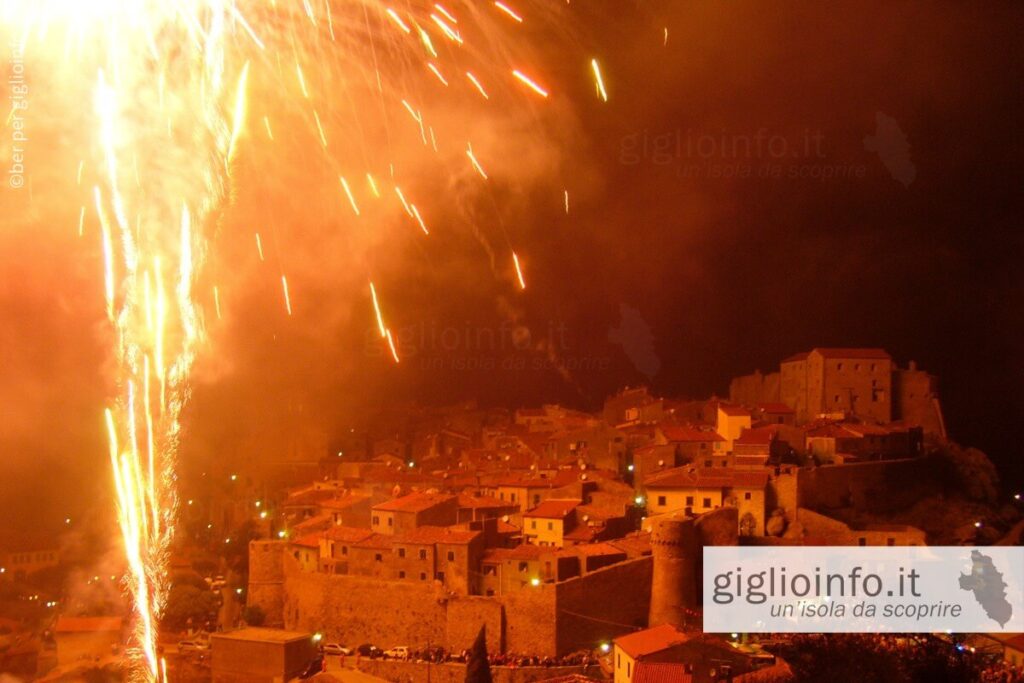
Events and Traditional Celebrations
- 10 August Festa of San Lorenzo (IT) Giglio Porto
- 16 August, Festa di San Rocco (IT), Giglio Campese
- 15 September, Festa di San Mamiliano (IT), Giglio Castello
Promotional Video “Isola del Giglio” of Roberto de Angelis for the Associazione San Rocco
Advertisement
Giglio island fact sheet
Fact Sheet Giglio
Name: Giglio Island
Region: Tuscany
Province: Grosseto (GR)
Latitude: 42° 21′ North
Longitude: 10° 45′ East
Surface area: 21,2 km²
Length: 8,3 km (N/W-S/E)
Width: 4,7 km
Altitude: 496 m a.s.l. Poggio della Pagana
Coastal Development: 28 km
Population: 1,399 (2013)
Population density: 59 inhabitants/km²
Prefix Tel. +39 0564
Fractions:
Giglio Castello, ZIP code 58012
Giglio Porto, ZIP code 58013
Giglio Campese, ZIP code 58012
Island of Giannutri, ZIP Code 58019
Distances Giglio
Giglio Porto by boat to/from –
11.6 m (21,5 km) – Porto S. Stefano
15.1 m (28 km) – Porto Ercole
As the Crow Flies
7.8 m (13.9 km) – Monte Argentario
8.5 m (15.7 km) – Isola di Giannutri
14.4 m (26.6 m) – Talamone
22.3 m (41.3 km) – Castiglione della Pescaia
27.9 m (51.7 km) – Isola d’Elba
36.3 m (67.2 km) – Isola Pianosa
23.9 m (44.3 km) – Isola di Montecristo
59.2 m (109.6 km) – Corsica
The nautical mile, also known as the international nautical mile, and often abbreviated with the abbreviations M, NMI or NM (Nautical Mile). The conversion factor is:
1 nautical mile (NMI) = 1852 meters
Italian Island
List of Italian islands sorted by size:
- Sicily: 25.426,2 kmq
- Sardinia: 23.812,6 kmq
- Elba (Tuscany): 223,5
- Sant’Antioco (Sardinia): 108,9 kmq
- Pantelleria (Sicily): 83,0 kmq
- San Pietro (Sardinia): 51,3 kmq
- Asinara (Sardinia): 50,9 kmq
- Ischia (Campania): 46,4 kmq
- Lipari (Sicily): 37,3 kmq
- Salina (Sicily): 26,1 kmq
- Giglio (Tuscany): 21,2 kmq
- Vulcano (Sicily): 20,9 kmq
- Lampedusa (Sicily): 20,2 kmq
- La Maddalena (Sardinia): 20,1 kmq
Visit Giglio Island
Getting Here
The island of Giglio can be reached throughout the year with one hour of navigation starting from Porto Santo Stefano (Monte Argentario). From here regular ferries reach Giglio Porto, the island’s only harbour. The two shipping companies Toremar and Maregiglio offer up to 12 trips a day during the summer, while in winter the daily departures are reduced to 4.
Alternatively you can visit Giglio with a mini-cruise: from the end of June to the middle of September, day trips are offered by cruise ships from Porto Santo Stefano and Castiglione delle Pescaia. The mini-cruises with destination of the island Giglio and Giannutri include stops of about 2-3 hours for a visit of the island or for a swim in the sea.
A daytrip to Giglio - Things to See & Do
Once you arrive with the ferry in Giglio Porto you can either opt to rent a boat or leave with the taxi boat service to discover the island from the sea or be taken to the nearby beaches of Cannelle or Caldane for a day of relaxation. If you want to head to the biggest beach of the island, Giglio Campese, best take the bus or taxi. In alternative you can also rent a car, scooter or e-bike to move around indipendently and explore the island and stop wherever you want.
A must see of Giglio is the medieval town of Giglio Castello on the hills. After a short break at Giglio Porto – you will have more time to visit it before leaving the island – take the bus to reach the village whose charm has remained intact over time: it’s all a climb of narrow streets along the ancient walkways that lead you to panoramic places with spectacular views on the ancient lighthouse and the whole Tuscan archipelago.
From Giglio Castello you can do a trekking tour (instead of taking the bus) back to Giglio Porto or down to Giglio Campese where you can enjoy some time by the sea: for being the largest beach on the island, the Campese bay is relatively quiet and is one of the most striking with the Medici Tower on one side and a rock, the Faraglione, on the other. Here the colors of the sea, of extraordinary clarity, contrast with the reddish sand of granite sedimentation.
Returning to Giglio Porto by bus, before leaving by ferry, a walk to the port with its colorful and picturesque houses, on the pier and a visit to the Saraceno tower and cove where you can see the remains of a Roman villa, should not be missed.
As an alternative to buses, you can also arrange with one of the taxi drivers for a taxi tour of the island. So you can also add a jump to the southern tip of Giglio, Capel Rosso, a truly magical place with the “famous” namesake lighthouse.
Please note: car and e-bike rental are available all year round, boat and scooter rentals only from May to September.
Advertisement


